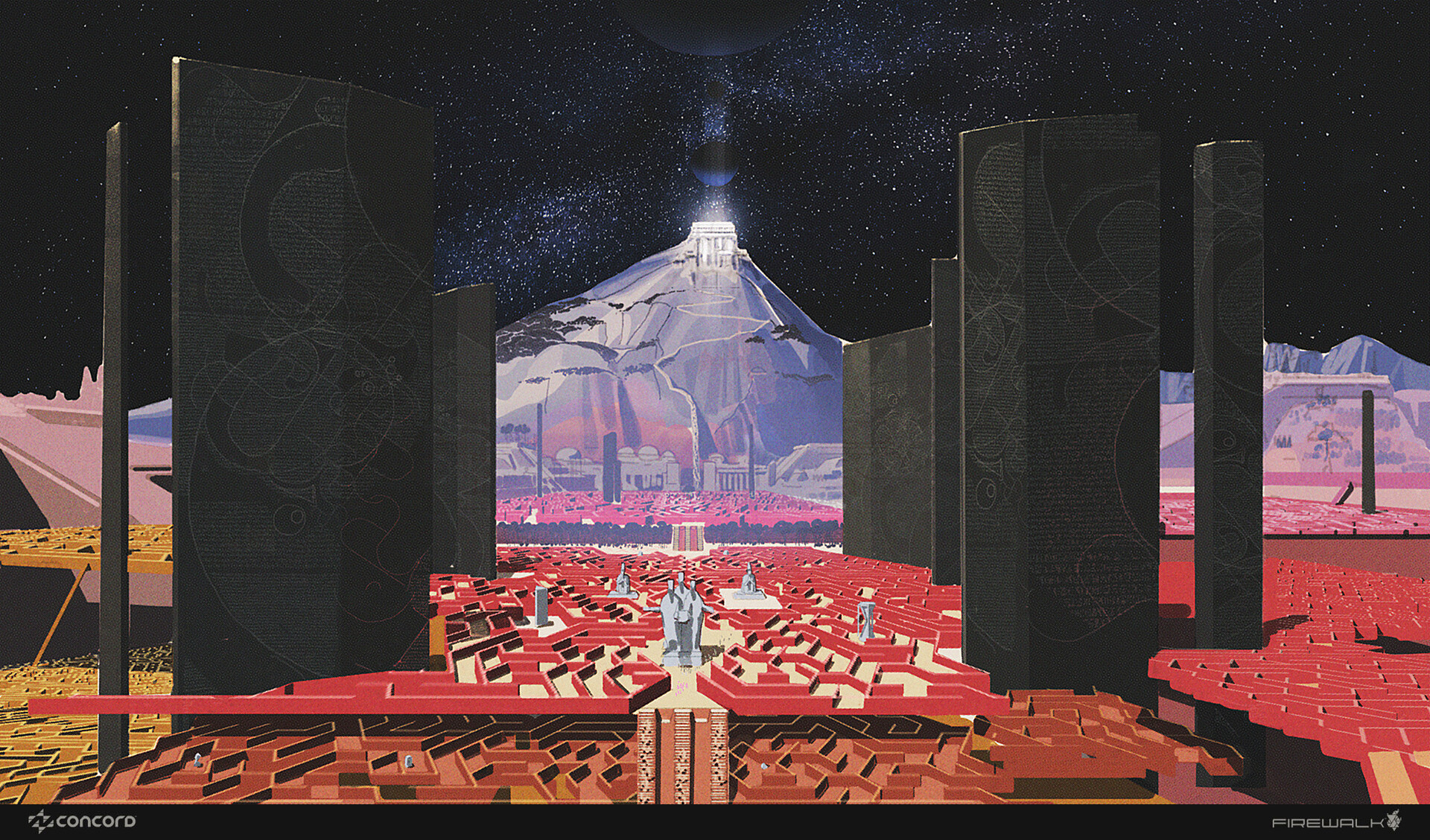How to use negative space to accurately draw hands
Learn this unique pro technique for better sketching.
To nail hand drawings, stop overcomplicating the anatomy and focus on the core shapes and movement. By breaking hands down into simple forms, you'll be able to sketch them confidently – whether from a model or straight from your imagination. While hands are infamous for being tricky, a few smart sketching techniques can make all the difference.
In this tutorial you can discover how to use negative space to make your proportions as accurate as possible. This is a technique that enables you to find the balance and accurate proportions in an object, like a hand, that you're drawing. If you find this tutorial helpful then you'll like Kate Oleska's gesture drawing tutorial and Brynn Metheney's guide to simplifying hand drawing.
Picking up one of the best drawing pencils for artists and sketching is a fun and easy way to learn how to draw, but these tips can be transferable to the best digital art software using the best drawing tablets too.
01. Understanding negative space
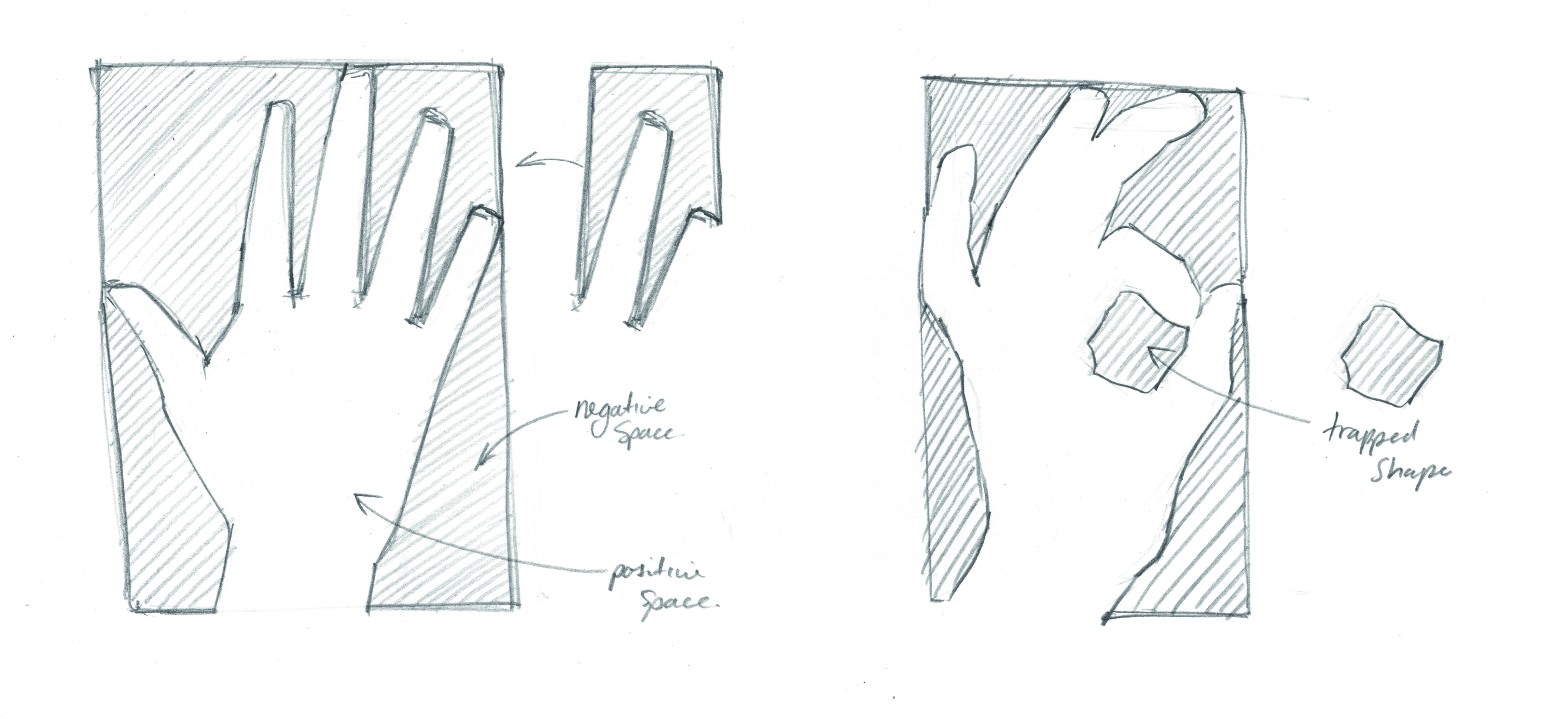
When you’re simplifying a three-dimensional object into a two-dimensional drawing, you're essentially mapping its shape on the surface of the page. Sometimes you might find it helpful to stop focusing on the ‘positive’ shape of your subject and instead look at the shapes surrounding it; these are the negative spaces. Sometimes these shapes will have boundaries on all sides – this is what we mean by trapped shapes – and sometimes you’ll need to create boundaries for them.
02. Making the underdrawing
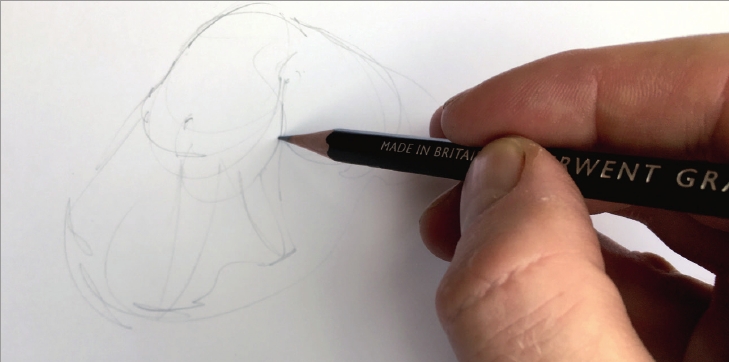
Pose your hand, or ask your model to hold a position, and start your drawing off with a loose, light, intuitive sketch in HB pencil. Simply look and draw what you see in less than a minute, keeping your marks energetic and allowing yourself time to look over your subject without agonising over the specific proportions.
03. Setting your limits
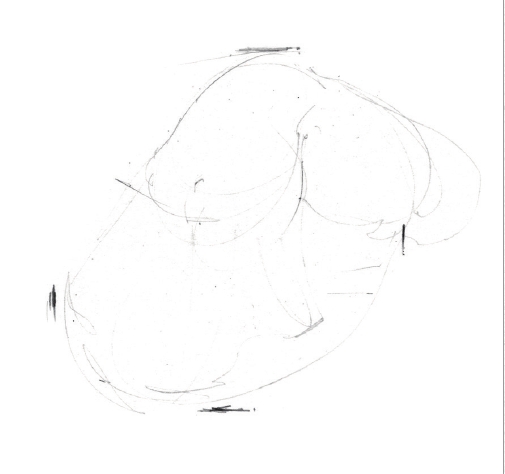
Using the initial sketch as a rough guide, mark out the top, bottom, left and right limits to your drawing.This will ensure that you don’t lose your drawing off the edge of the page and also help you to better establish a sense of scale within the image.
04. Drawing out a box
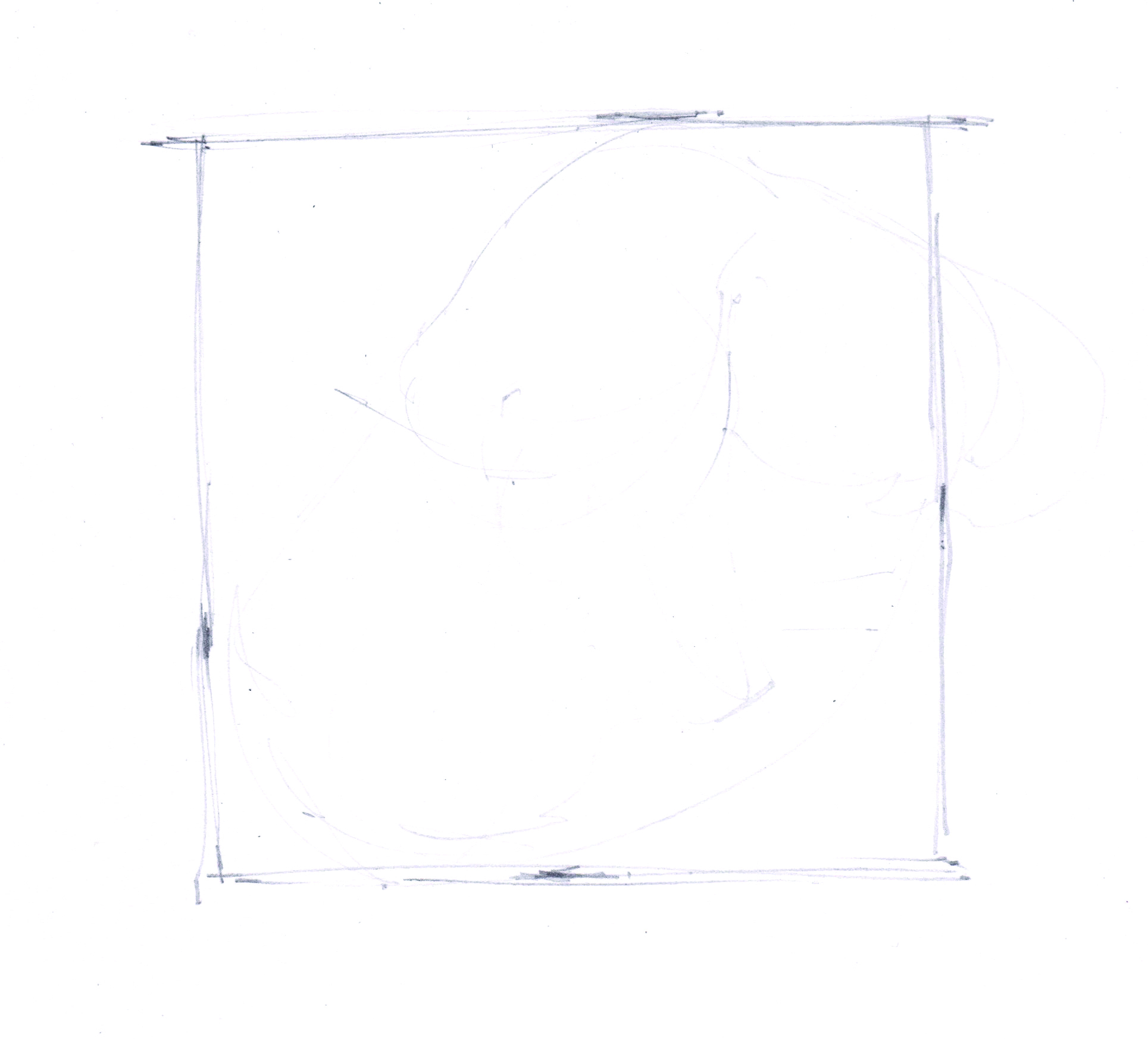
Use these new limits to construct a box around your subject. Imagine your subject within a box: what dimension would that box be? Short and squat or long and thin? Would it be in portrait or landscape format?
05. Carving big shapes
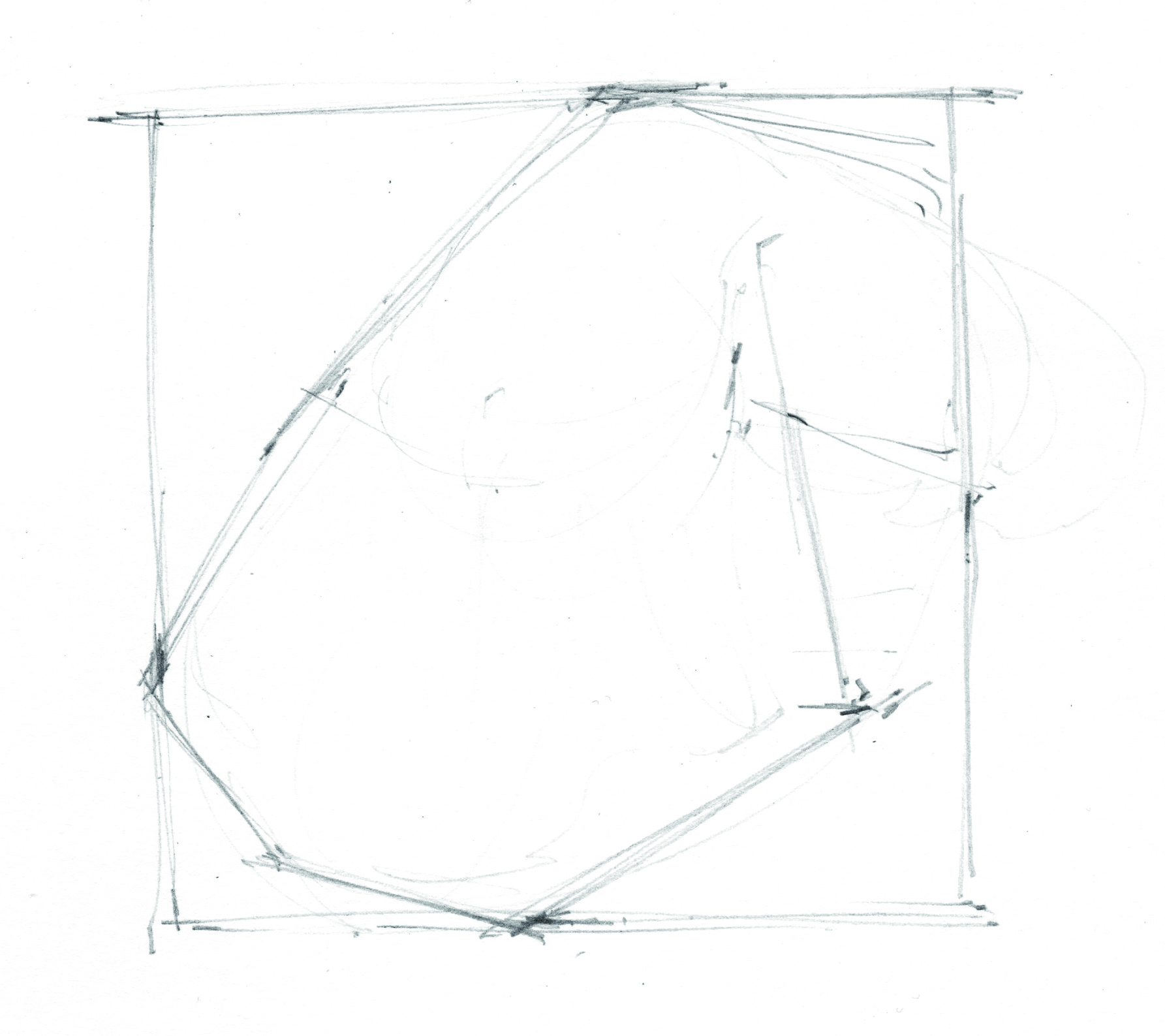
Now look for the big shapes that make up your hand, keeping your marks rough and angular. Work as if you were carving the hand out of wood, making straight cuts to rough out the form of your subject before carving in the detail.
06. Inserting negative spaces
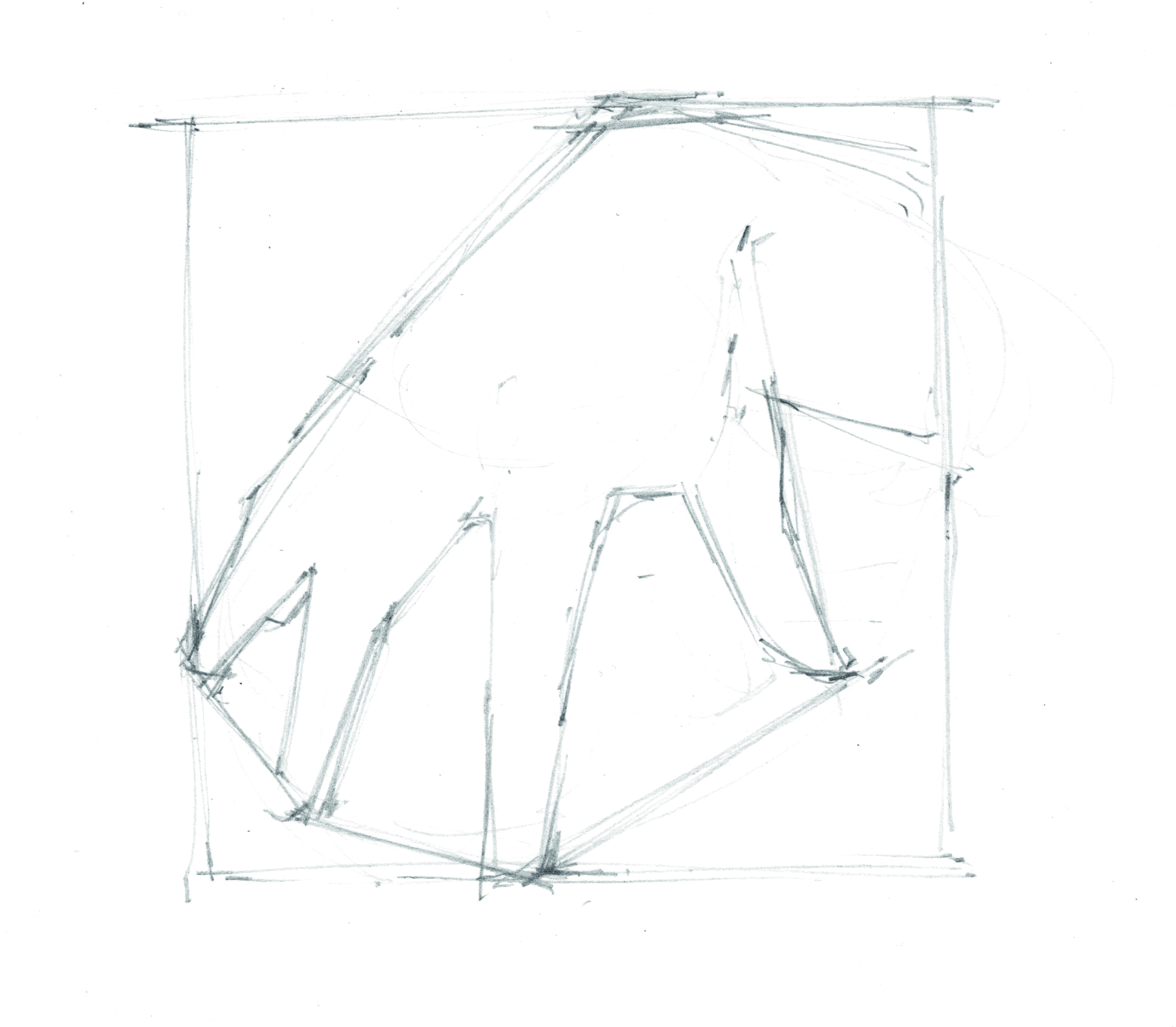
Maintaining your simple marks, draw the triangular wedges of negative space between the fingers. Try not to draw the fingers at all, just concentrate on the shapes themselves and let the rough shapes of the digits appear as you draw.
07. Erasing the outline
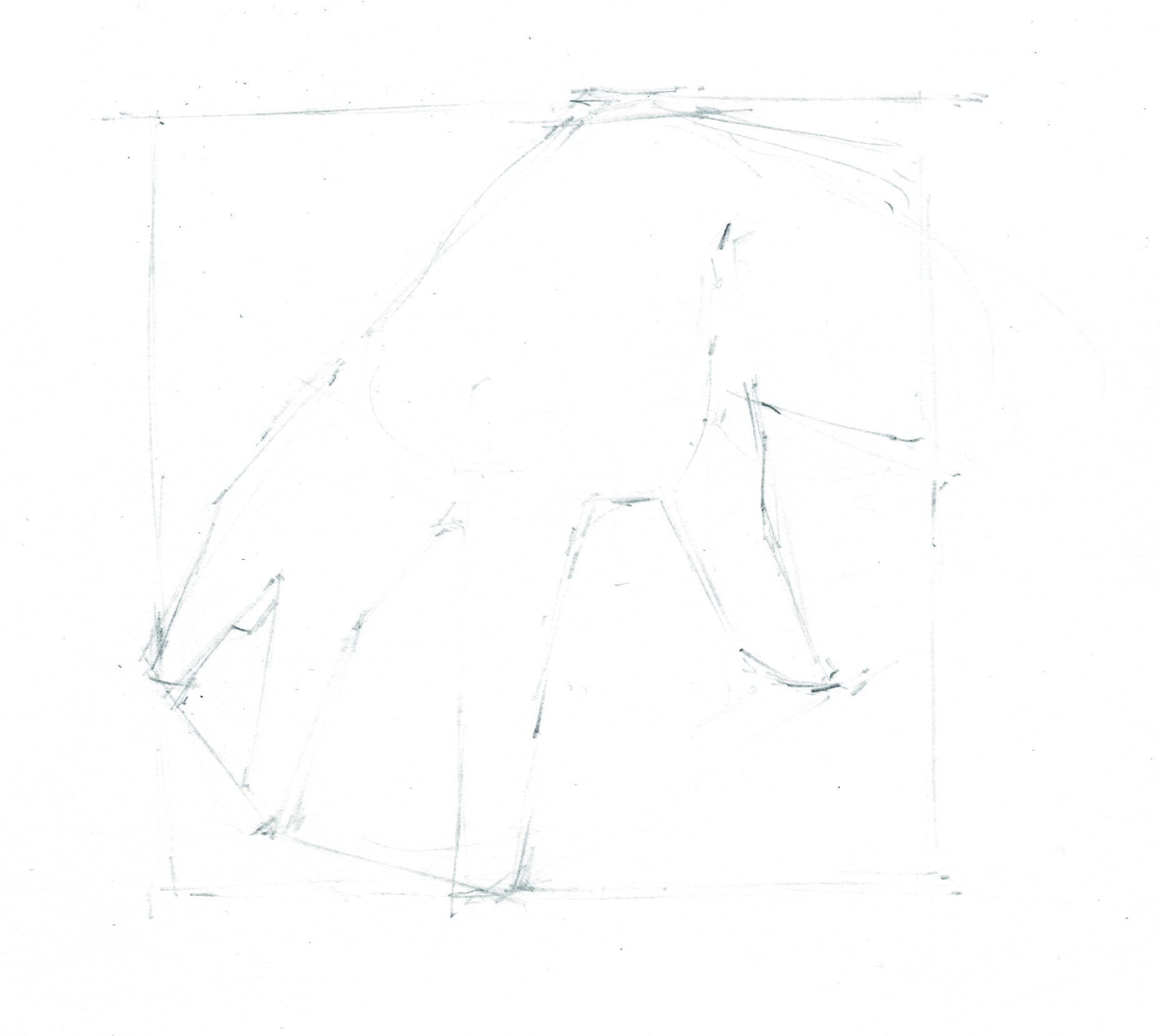
Once you have a rough, angular drawing established on the page in HB pencil, use your eraser to lightly rub out the lines of your drawing, leaving them only faintly visible to guide you as you draw.
08. Redrawing the hand
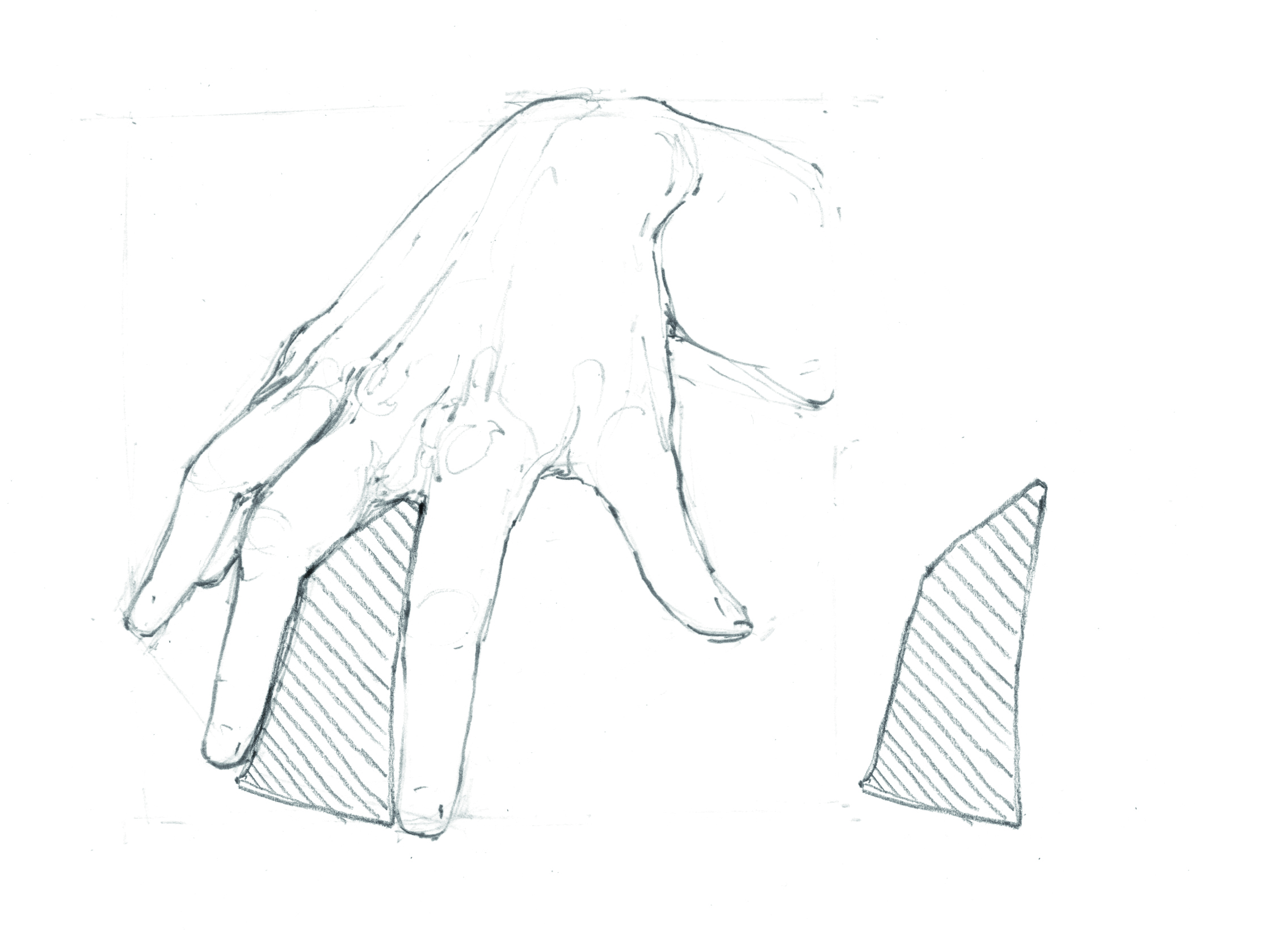
Using the faint underdrawing as a guide, redraw the hand from observation in 3B pencil. As you draw, use the negative spaces to check the proportion of your evolving image. Do the negative spaces in your drawing look the same shape as the spaces between the fingers of the hand you’re drawing? Think of the spaces like jigsaw puzzle pieces: they should fit with the positive space to make the final, resolved image.
09. Elaborating the lines
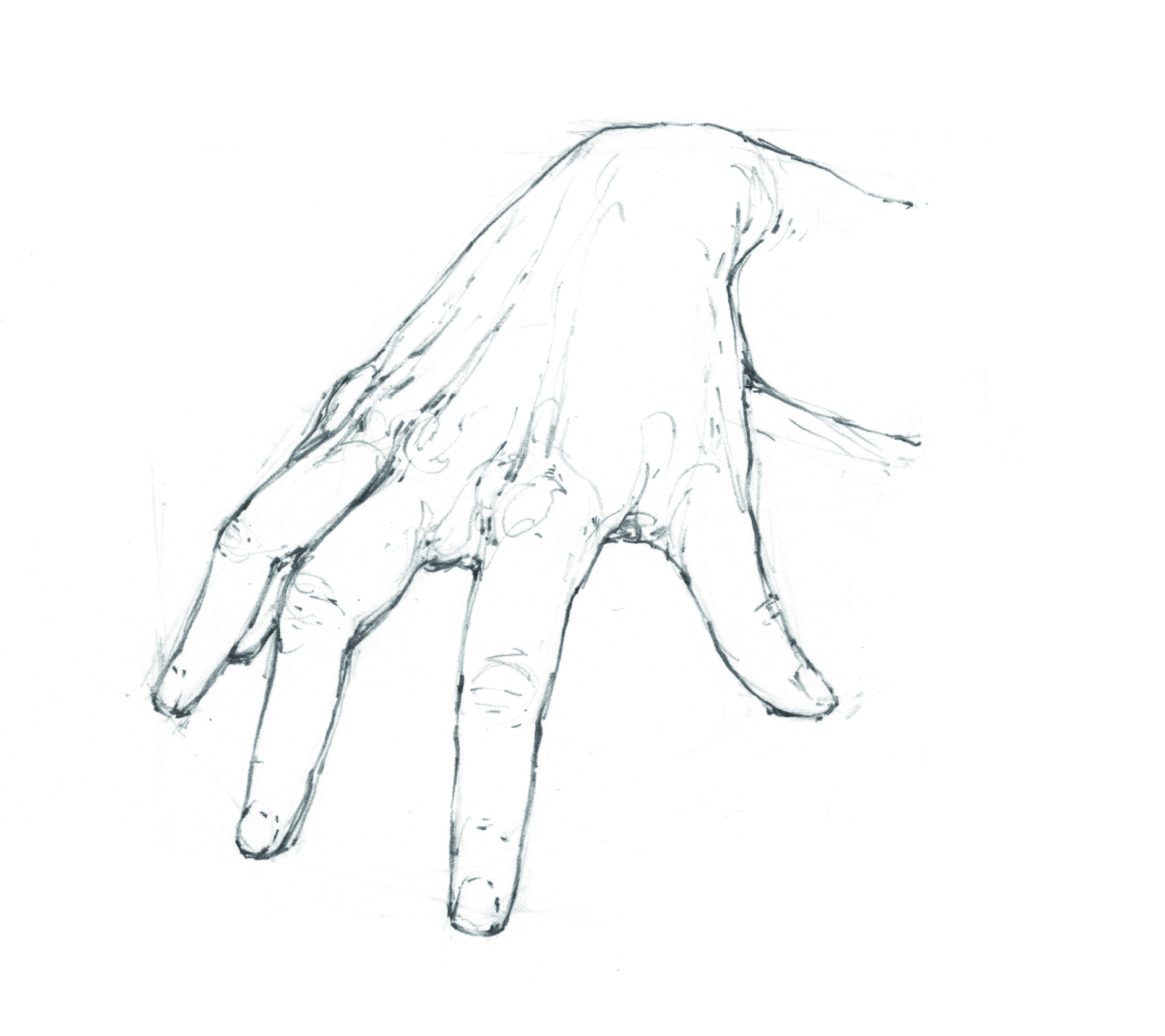
Next we’ll refine the drawing, using a lighter, more playful line to delineate the shapes within the hand and reaffirming the outline of the fingers. Think about how you might capture the tension within the hand, or suggest pressure where the fingertips are pressed up against surfaces.
This content originally appeared in ImagineFX magazine, the world's leading digital art and fantasy art magazine. ImagineFX is on sale in the UK, Europe, United States, Canada, Australia and more. Limited numbers of ImagineFX print editions are available for delivery from our online store (the shipping costs are included in all prices).
Get the Creative Bloq Newsletter
Daily design news, reviews, how-tos and more, as picked by the editors.

Thank you for reading 5 articles this month* Join now for unlimited access
Enjoy your first month for just £1 / $1 / €1
*Read 5 free articles per month without a subscription

Join now for unlimited access
Try first month for just £1 / $1 / €1

Jake is an artist, author of a bestselling series of how to draw books and head tutor of independent drawing school Draw. He regularly works for The V&A Museum, The National Portrait Gallery and BBC amongst others.
You must confirm your public display name before commenting
Please logout and then login again, you will then be prompted to enter your display name.
